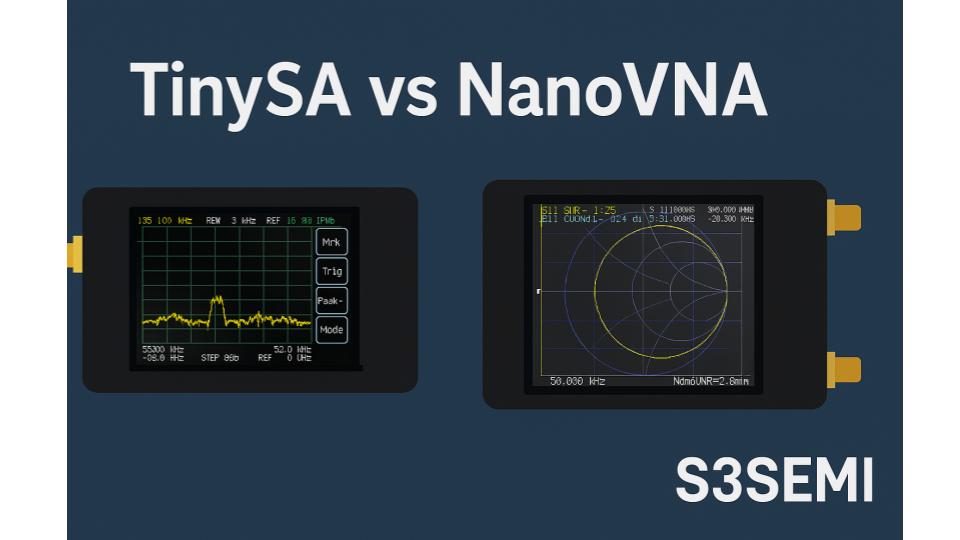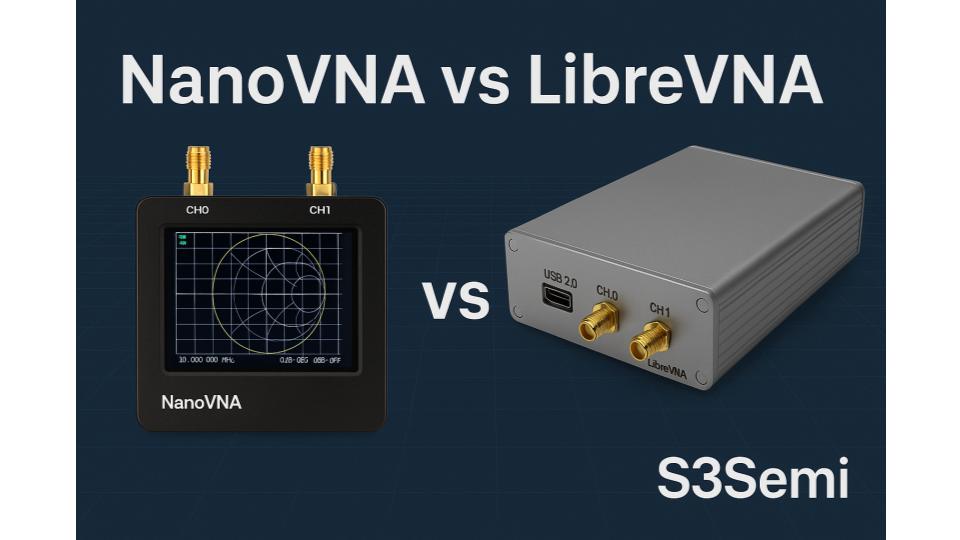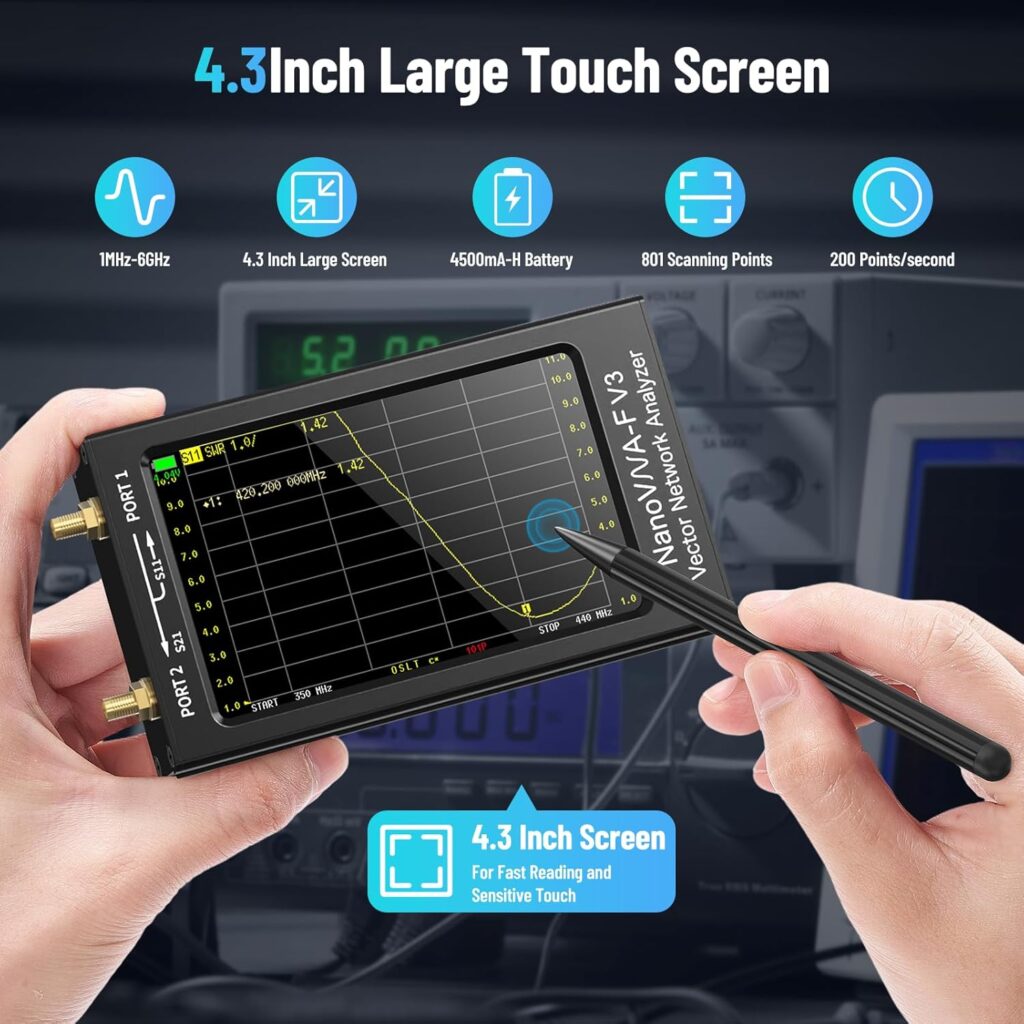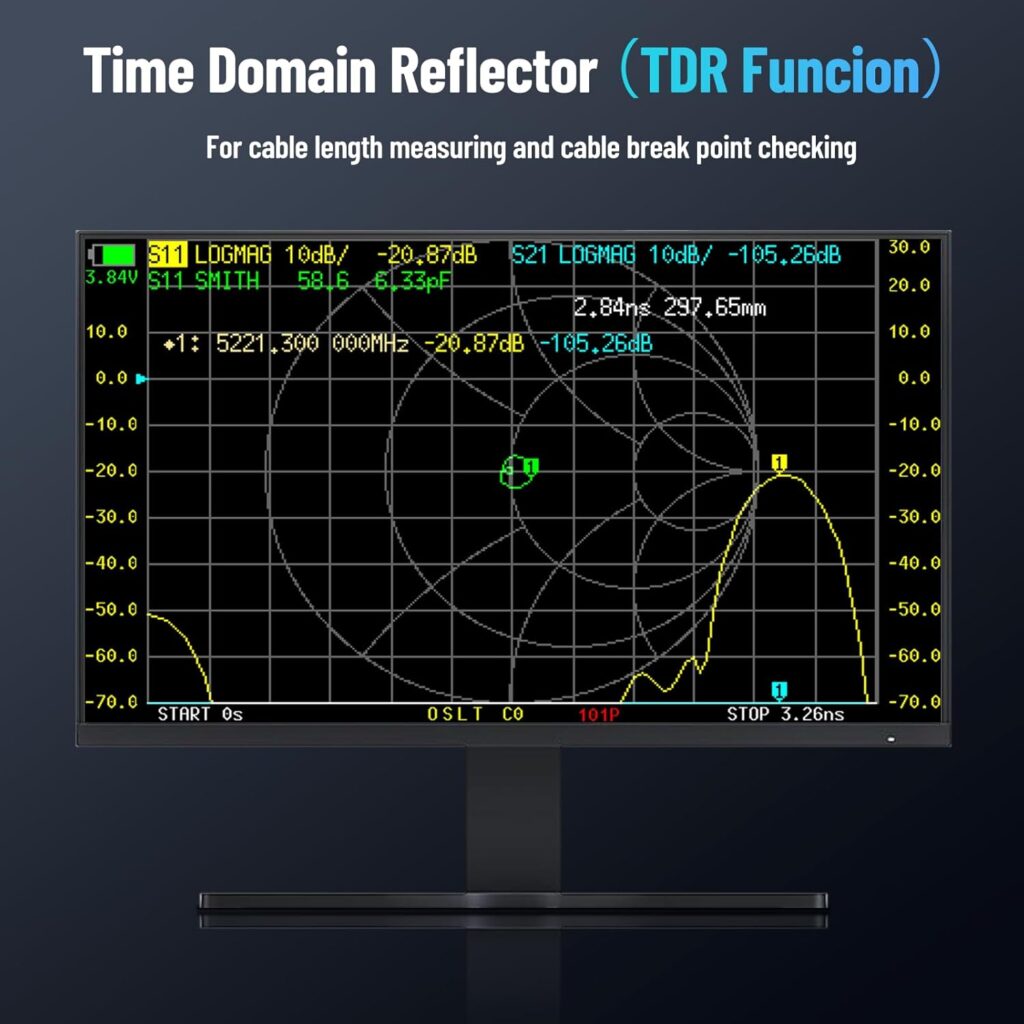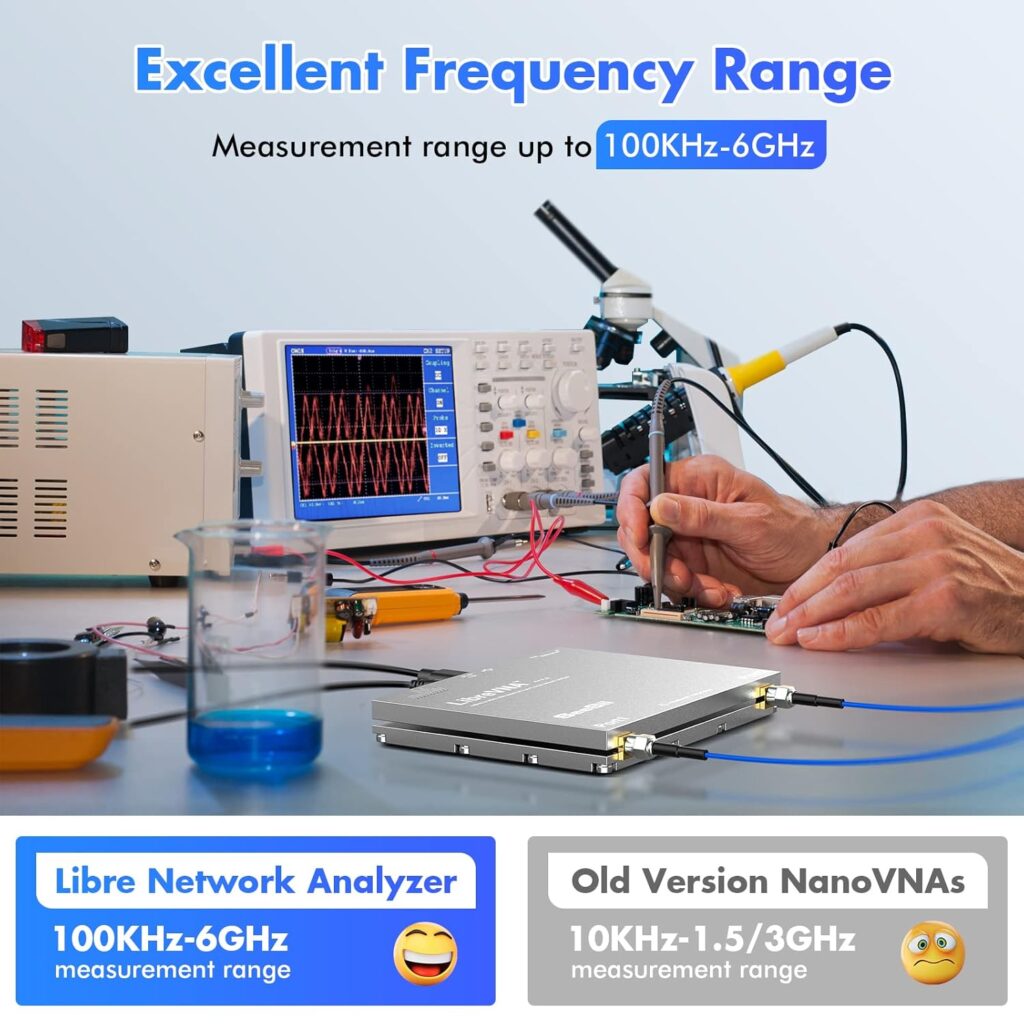The NanoVNA changed the RF hobby world forever – an affordable, handheld Vector Network Analyzer (VNA) that could do the work of lab instruments costing thousands. But now, a new contender has emerged – the LibreVNA, an open-source, higher-performance alternative with impressive accuracy and frequency range.
👉 Check the 6 GHz LibreVNA on Amazon
So, how do they compare? Let’s dive into what sets the NanoVNA and LibreVNA apart, and which one might be right for you.
📡 Overview
Both the NanoVNA and LibreVNA are two-port vector network analyzers, designed to measure reflection (S11) and transmission (S21) parameters across a wide frequency range. They’re invaluable for antenna tuning, filter characterization, and impedance matching – but they differ dramatically in design philosophy, frequency coverage, and measurement accuracy.
In short:
👉 The NanoVNA is affordable, compact, and great for hobbyists.
👉 The LibreVNA offers professional-grade performance and open-source transparency.
⚙️ Key Specification Comparison
| Feature | NanoVNA (V2 Plus / H4) | LibreVNA |
|---|---|---|
| Frequency Range | 50 kHz – 3 GHz (some versions up to 6.3 GHz) | 100 kHz – 6 GHz |
| Dynamic Range (S21) | ~70 dB typical | ~100 dB @ 1 GHz, ~80 dB @ 6 GHz |
| Measurement Type | S11 (reflection) and S21 (transmission) | S11 and S21, full 2-port calibrated |
| Display | Built-in touchscreen (2.8″ – 4.3″) | No display – PC-based control |
| Calibration | SOLT (Short-Open-Load-Through) | SOLT / Thru-Reflect-Line (TRL) supported |
| Output Power | −10 dBm to 0 dBm typical | Up to +5 dBm adjustable |
| Sweep Speed | ~400 points/second | ~2 000 points/second |
| PC Interface | USB-C, optional Bluetooth | USB 2.0 / USB-C (host-controlled) |
| Software | NanoVNA-Saver, NanoVNA-App | LibreVNA GUI (Windows/Linux) |
| Open Source | Hardware + Firmware | Hardware + Firmware + Calibration Files |
| 💳 Price Range (2025) | 💲 Check Price | 💲 Check Price |
| Best For | Antenna tuning, field use | Laboratory and precision RF testing |
🔍 Performance Differences
🔹 NanoVNA
The NanoVNA is designed to be small, portable, and budget-friendly. It offers surprisingly good accuracy for its price, making it the go-to tool for antenna builders, students, and hobbyists.
Pros
- Ultra-low cost and compact
- Battery powered — great for field tuning
- Color touchscreen with built-in display
- Huge software ecosystem (NanoVNA-Saver, VNA-Qt, NanoVNA-App)
Cons
- Limited dynamic range
- Calibration can drift at higher frequencies (> 2.5 GHz)
- Lower frequency stability and output power
Ideal for ham radio antennas, coax testing, and basic RF component evaluation.
🔹 LibreVNA
The LibreVNA is a more advanced, open-hardware VNA built for serious RF work. It offers lab-grade accuracy and higher dynamic range, rivaling instruments from Keysight or Rohde & Schwarz – at a fraction of the cost.
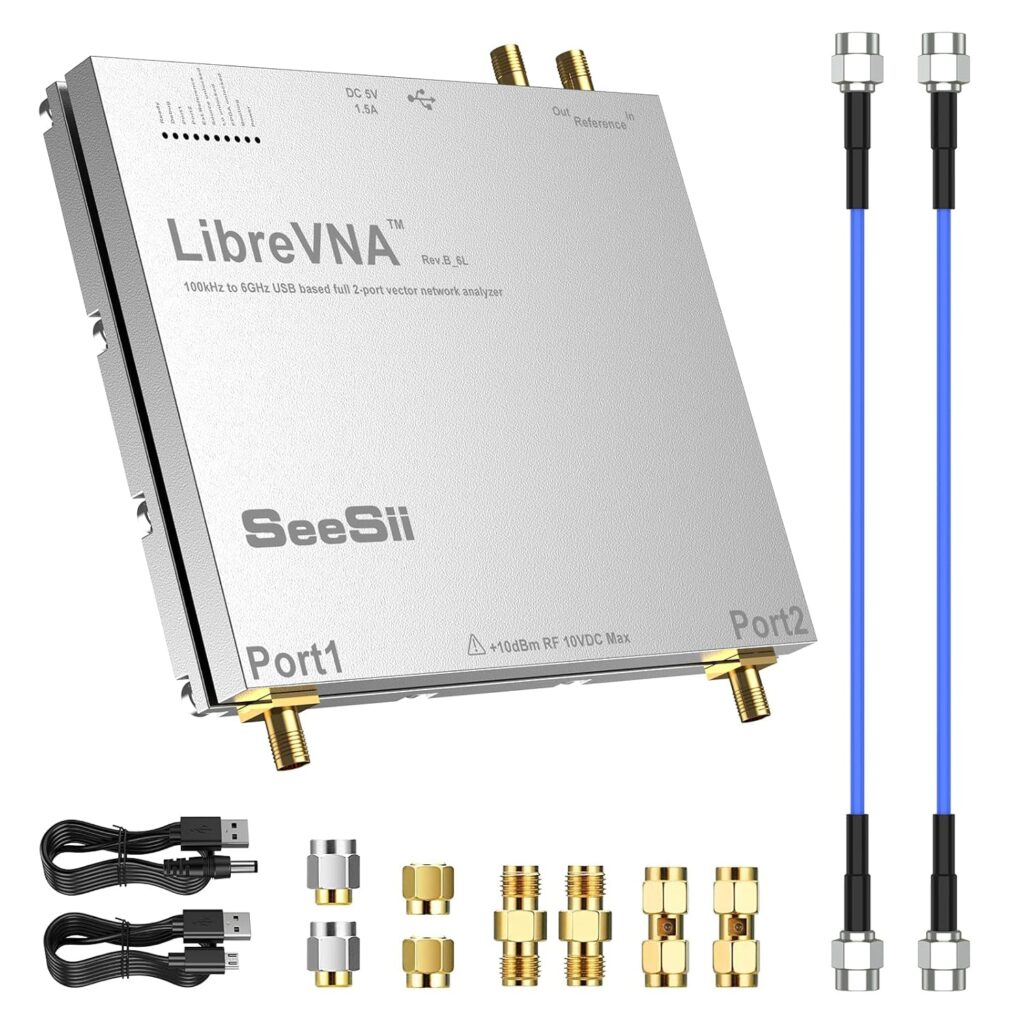
Pros
- 6 GHz coverage with exceptional accuracy
- Supports multiple calibration methods (SOLT, TRL)
- Fully open source — firmware and hardware schematics available
- USB-controlled, ideal for PC data acquisition and automation
- Faster sweep speed for smoother graphs
Cons
- Requires a computer (no built-in display)
- Higher cost than NanoVNA
- Less portable for field work
Perfect for professional R&D labs, filter design, and precision impedance analysis.
⚙️ Use-Case Comparison
| Application | NanoVNA | LibreVNA |
|---|---|---|
| Antenna tuning (ham/CB) | ✅ | ✅ |
| Filter characterization | ⚠️ Moderate accuracy | ✅ High accuracy |
| RF cable testing | ✅ | ✅ |
| PCB / component measurement | ⚠️ Limited precision | ✅ Excellent |
| Automated measurement scripts | ❌ | ✅ via USB API |
| Field use / portable testing | ✅ | ❌ |
| Educational / beginner use | ✅ | ⚠️ Higher learning curve |
👉 Check the 6 GHz NanoVNA on Amazon
💬 Practical Takeaway
If you’re working below 3 GHz and want a portable, all-in-one analyzer, the NanoVNA is unbeatable for the price.
If you need high dynamic range, automation, and accuracy up to 6 GHz, the LibreVNA is worth every penny.
Together, they form a great pairing — the NanoVNA for field work and the LibreVNA for bench measurements.
🧭 Final Thoughts
Both analyzers are built on the same philosophy – making RF measurement accessible – but they target different audiences:
- NanoVNA: Ideal for hobbyists, ham radio users, and students.
- LibreVNA: Designed for professionals, engineers, and researchers who need precision and flexibility.
In short:
👉 The NanoVNA democratized RF testing.
👉 The LibreVNA perfected it.
